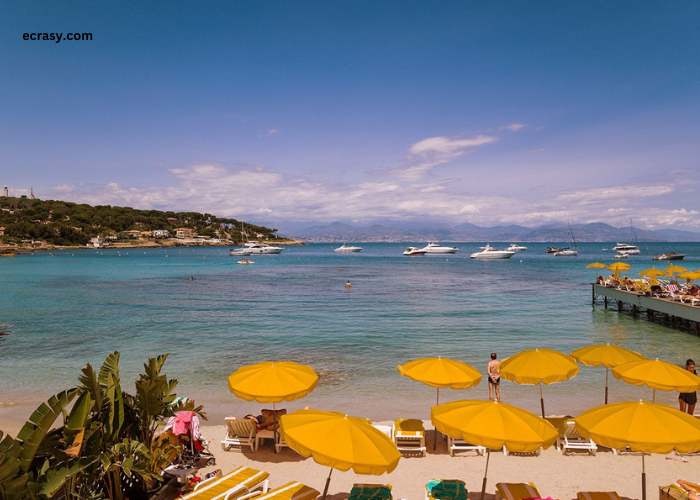Coastlines, the meeting point of land and sea, are dynamic and ever-changing landscapes. They hold a unique place in our planet’s history, reflecting the intricate dance between geological forces, climate shifts, and the relentless power of water. The evolution of coastlines, or Evolution Des Cotes as it is known in French, is a topic that transcends time and borders, offering a captivating narrative of Earth’s transformation. In this comprehensive exploration, we will delve deep into the history, processes, and significance of coastlines’ evolution.
The Geological Tapestry
To truly understand the evolution of coastlines, we must journey back in time, deep into the annals of Earth’s geological history. The story begins billions of years ago when our planet was still in its infancy, and the continents as we know them today were non-existent. The landmasses were clustered together in a supercontinent called Pangaea, surrounded by a vast, unbroken ocean.
Over millions of years, the Earth’s lithosphere began to fracture and drift apart, setting the stage for the formation of modern continents. As these landmasses shifted, tectonic plates collided and separated, giving birth to the first coastlines. These early coastal areas were rugged and volatile, shaped by relentless volcanic activity, earthquakes, and the ceaseless forces of erosion.
The Role of Climate
Climate has played a pivotal role in shaping the evolution of coastlines. The ebb and flow of ice ages and interglacial periods have caused dramatic shifts in sea levels, profoundly affecting the coastline’s appearance and location. During ice ages, vast glaciers locked up vast amounts of water, causing sea levels to drop and exposing previously submerged land. Conversely, during interglacial periods, melting ice sheets resulted in rising sea levels, inundating coastal areas and creating new shorelines.
In addition to sea level changes, climate also influenced the erosion and sedimentation processes along coastlines. Intense rainfall, tropical storms, and seasonal variations in temperature have all played their part in sculpting the intricate features we see today. For example, the rugged coastlines of Norway and New Zealand are a testament to the power of glacial erosion, while the sandy beaches of the Caribbean owe their existence to warm, tropical conditions.
Erosion and Sedimentation
One of the most fundamental processes in the evolution of coastlines is erosion. The relentless action of waves, wind, and water wears away the land, reshaping coastlines over thousands or millions of years. Erosion can create dramatic features such as sea stacks, cliffs, and sea caves, which add to the scenic beauty of coastal areas.
Conversely, sedimentation is the process by which eroded materials are deposited along the coastline, gradually building up landforms like beaches, barrier islands, and coastal deltas. Sedimentation is a delicate balance between the availability of sediment, the strength of coastal currents, and the influence of sea level changes. The result is a dynamic interplay of deposition and erosion, which varies from one coastline to another.
Human Impact
The story of the evolution of coastlines would be incomplete without acknowledging the profound impact of human activities. As civilization has advanced, so too has our ability to alter and shape coastal landscapes. Urbanization, industrialization, and tourism have all contributed to the transformation of coastlines.
Coastal development often involves the construction of harbors, piers, and seawalls to protect against erosion and facilitate commerce. While these interventions can provide short-term benefits, they can also disrupt natural processes and have long-term consequences for the health of coastal ecosystems.
Pollution and overfishing are other factors that have left their mark on coastlines. Oil spills, plastic debris, and runoff from urban areas have led to environmental degradation and habitat destruction, threatening the delicate balance of coastal ecosystems. Overfishing has depleted fish stocks, disrupting the food web and affecting the livelihoods of coastal communities.
The Future of Coastlines
As we look to the future, it’s clear that the evolution of coastlines will continue to be shaped by a complex interplay of natural forces and human activities. Climate change, in particular, poses significant challenges, with rising sea levels and more frequent extreme weather events threatening coastal communities and ecosystems.
Adapting to these changes will require a holistic approach that considers both the natural environment and human needs. Coastal management strategies, such as beach nourishment, dune restoration, and sustainable development practices, can help mitigate the impacts of erosion and rising sea levels while preserving the unique beauty and biodiversity of coastlines.
Conclusion
The evolution of coastlines is a captivating journey through time, a testament to the Earth’s ever-changing nature. From the geological forces that shaped continents and coastlines over eons to the intricate interplay of climate, erosion, and sedimentation, these dynamic landscapes continue to be shaped by natural processes.
However, it is essential to acknowledge the profound influence of human activities on coastlines. From urbanization and industrialization to pollution and overfishing, our actions have far-reaching consequences for these environments. As stewards of the coast, it is our responsibility to adopt sustainable practices that balance human needs with the preservation of the natural beauty and biodiversity of these regions.
The cultural significance of coastlines cannot be overstated, as they have been central to human civilization for centuries. These dynamic landscapes have inspired art, literature, and cultural traditions and continue to serve as places of leisure and recreation.
Looking ahead, the challenges facing coastlines are substantial, with climate change and environmental degradation posing significant threats. However, through concerted conservation efforts, sustainable coastal management, and a deep appreciation for the beauty and importance of coastlines, we can ensure that these remarkable environments endure for generations to come.
